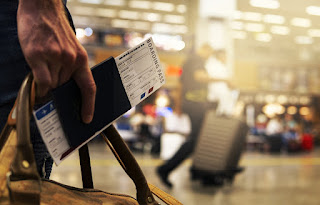Modern Green Healthy World 🌎
Modern Green Healthy World
Designing the city of the future involves integrating technology, sustainability, and human-centric planning to create a livable, efficient, and resilient urban environment.
Here’s a conceptual outline:
 |
Ecosystem house |
1. Sustainable Infrastructure:
 |
| Green houses |
- Green Buildings: Incorporate energy-efficient materials and systems. Buildings would generate their own energy through solar panels, wind turbines, and geothermal systems.
- Zero Waste: Waste management systems would prioritize recycling, composting, and energy recovery, with a goal of eliminating landfill waste.
- Water Management: Smart water systems would recycle greywater, harvest rainwater, and utilize green infrastructure to manage stormwater.
2. Smart Transportation:
 |
| Electric Vehicules |
- Electric & Autonomous Vehicles: The city would prioritize electric and autonomous public transport, reducing emissions and traffic accidents. Roads would have dedicated lanes for these vehicles.
- Integrated Public Transit: A seamless network of buses, trains, trams, and bike-sharing programs, all connected through a unified digital platform for easy planning and payment.
 |
| Futuristic transportation |
- Pedestrian & Cycle-Friendly: Streets designed for pedestrians and cyclists first, with extensive walking paths, cycle lanes, and green corridors.
3. Urban Planning & Architecture:
 |
| Greenhouses |
- Mixed-Use Development: Buildings would combine residential, commercial, and recreational spaces to reduce travel distances and encourage community interaction.
- Vertical Gardens & Farms: High-rise buildings would feature vertical gardens and urban farms, providing local food production and improving air quality.
 |
| Vertical Gardens |
- Modular & Flexible Spaces: Buildings and public spaces designed with adaptability in mind, allowing for easy reconfiguration to meet changing needs.
4. Smart City Technology:
- IoT Integration: The city would be connected through the Internet of things (IoT), with sensors monitoring everything from traffic flow to air quality, allowing for real-time adjustments.
- Data-Driven Governance: City management would use big data analytics to optimize public services, predict infrastructure needs, and respond quickly to emergencies.
- Augmented Reality (AR): Public spaces would incorporate AR for navigation, tourism, and interactive experiences.
5. Environmental & Social Resilience:

Public space in the top of the building
- Climate Resilience:The city would be designed to withstand natural disasters through resilient infrastructure, green roofs, floodable parks, and emergency planning.
- Inclusive Design: Public spaces would be accessible to all, with a focus on equity, ensuring that every citizen has access to basic services, green spaces, and cultural amenities.
- Health & Well-being: Urban design would prioritize mental and physical health, with ample green spaces, recreational facilities, and community health services.
6. Energy Management:
- Renewable Energy Grid: A decentralized energy grid would rely on renewable sources like solar, wind, and biomass, with smart grids ensuring efficient energy distribution.
- Energy Storage: Advanced energy storage systems, including batteries and hydrogen storage, would balance supply and demand, ensuring reliability.
7. Community & Cultural Spaces:
- Public Art & Culture: The city would feature abundant public art, performance spaces, and cultural centers, celebrating diversity and fostering community spirit.
- Education Hubs: Schools and universities would be integrated into the community, offering flexible learning spaces and lifelong education opportunities.
8. Biodiversity & Green Spaces:
- Urban Forests & Parks: Extensive green belts, parks, and urban forests would be woven into the city fabric, supporting biodiversity and providing natural spaces for residents.
- Wildlife Corridors: The city would include dedicated areas for wildlife, with corridors connecting green spaces to support ecosystems.
9. Circular Economy:
- Local Production: The city would support local production and consumption, with urban farming, maker spaces, and local manufacturing hubs.
- Resource Sharing: A culture of sharing and reuse would be encouraged, with platforms for sharing tools, spaces, and even skills.
10. Global Connectivity:
- Digital Infrastructure:
High-speed internet and 5G networks would ensure global connectivity, supporting remote work, digital education, and international collaboration.
- Sustainable Aviation & Transport:
The city would be connected globally via sustainable aviation technologies and efficient long-distance transport systems.
This future city would prioritize the well-being of its residents, environmental sustainability, and technological innovation, creating a model for urban living in the 21st century and beyond.
How do you think the perfect future will be?
Hope you enjoyed reading with me





Comments
Post a Comment